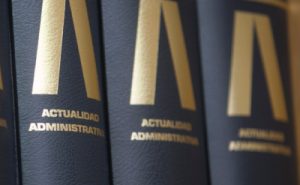Demand of responsibility to the Administrators of companies

The administrators’ obligations are included in articles 225 et seq. of the Capital Companies Act, and they will be liable for breach of such duties when this causes damage to the company or third parties.
We analyze in detail the duties of the administrators in our article Duties and obligations of company administrators.
Who are the Company Administrators
The administrators of the company are the members of the management team in charge of making the most important decisions in a company.
Posts with such broad management powers are necessarily subject to a system of liability vis-à-vis society. The requirement of responsibility for company administrators means that the rest of the partners who do not participate in the board of directors have tools to control the management of the administrators, and if necessary, they can file legal claims against the negligent administrator.
The tendency of our Law has been to increase the liability regime of company administrators, especially with the entry into force of the reform of the Capital Companies Act which entered into force on 24 December 2014.
That is why the people who hold these positions are becoming more aware of what it means to assume the role of administrator. Our courts have been establishing the necessary requirements for the requirement of responsibility that we review below:
- As a first requirement, the administrator or administrators in question must have incurred in some type of breach, either of a legal duty or of a rule included in the bylaws.
- The breach must have occurred while the administrator held said position in the company, and within the framework of the obligations inherent to the position. The responsibilities that we analyze in this study cannot be demanded for acts carried out when the defaulter has ceased as administrator.
- That the illegal action of the administrator or administrators has generated damage. Responsibilities cannot be demanded when the non-compliance has not had consequences for the company or for third parties. However, when the damage has occurred, the administrator will be responsible even if the breach was involuntary. In legal terms we say that malicious behavior is not required, it is enough that it is negligent. The classic patterns of non-compliance by an administrator are the following:
- “Culpa in commitdo“, called the act of directly committing the wrongful act.
- “Culpa in eligendo“, for the selection of personnel and assignment of functions for those who are not properly trained.
- “Culpa in vigilando“, for not keeping due vigilance over any of his subordinates who committed the crime.
- “Culpa in omittendo“, for refraining from acting diligently to avoid the illegal act or the damage that it has caused.
- “Culpa in instrendo“, when the damage is caused by the improper instruction of the administrator.
- That there is a causal relationship between the behavior of the administrator and the damage produced. In other words, that the damage that has been generated has as its origin the specific non-compliance that the administrator is accused of.
This requirement of responsibility towards administrators may be of a different nature depending on the offense committed by the administrator in question. We will see below the different types of responsibility that any social administrator faces.
Commercial liability of company administrators
We prefer to speak of the “commercial liability” of the administrators, although in the doctrine civil liability is frequently mentioned, as a mere distinction from “criminal liability”.
Those affected by the damage caused as a result of a breach by the social administrator, may take legal action to demand that the defaulter restore the damage. There are two actions that can be brought, depending on the damage that has been produced, and they respond to the names of “corporate liability action” and “individual liability action” that we are going to analyze below.
Social responsibility action
This action must be filed by the company itself, through a lawsuit, against the administrator, and its purpose is to replace the company’s assets that have been harmed.
When the company does not adopt the corresponding resolution of the General Meeting to sue the administrator responsible for the damage, the partners of the company may do so directly as long as they accumulate at least 5 percent of the shares or participations of the company.
Individual liability action
When the willful or negligent action of an administrator causes damage to a third party or to any of the partners, the person who considers himself harmed may contact the administrator causing the damage to claim an indemnification. The exercise of this action will also require the filing of a lawsuit against the defaulting administrator.
Liability for loss
Special mention should be made of the administrators’ liability for losses, when the company has generated losses to the point of reducing the company’s equity to less than half the amount of the share capital. We analyze this issue in depth in our article Liability of administrators for losses .
Criminal liability of company administrators
Art. 227 of the Capital Companies Law includes the duty of loyalty of the administrators, and in the second section it is established that the breach of the duty of loyalty will determine not only the obligation to compensate the damage caused to the company’s assets, but also to return to society the unjust enrichment obtained by the administrator.
The unjust enrichment obtained by the administrator, referred to in art. 227 LCS, could in turn lead to the commission of a crime of misappropriation when the administrator had diverted amounts of money from the company to his personal assets. This crime carries prison sentences that could reach up to 8 years depending on the case.
In the same way, the Criminal Code includes another type of crime known as “Unfair Administration” in article 252 for “those who, having powers to administer another’s patrimony, emanating from the law, entrusted by the authority or assumed through a legal transaction, violate them by exceeding the exercise of the same and, in this way, cause damage to the managed assets.”
VideoBlog
Responsibility of Company Administrators
08/03/2018






